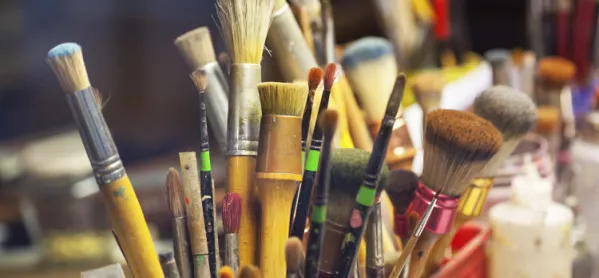- Home
- More than half of art teachers consider quitting as subject becomes ‘devalued’
More than half of art teachers consider quitting as subject becomes ‘devalued’

Art classes have been cut as government policies have devalued the subject, new research finds.
Almost nine out of 10 (89 per cent) primary teachers surveyed said their school reduced time for art in Year 6 in the run-up to the Sats.
In secondary schools, 44 per cent of teachers said there was less time given to the subject at key stage 3 and more than a third (34 per cent) of those working with post-16 students said courses had closed in their institution.
In a “health check” for the subject, the National Society for Education in Art and Design (NSEAD) asked 1,191 members how things had changed in the past five years.
“The subject is not terminally ill, but it is being neglected and the neglect is turning it into a casualty,” said Lesley Butterworth, general secretary of NSEAD. “Art teachers are working incredibly hard against the odds and are passionate about their subject.
“The vital thing [this survey shows] is that from a lack of value comes everything else: that is why it is not on the EBac [English Baccalaureate], there is no CPD, there is little respect from parents or governors.
“Students lack confidence. If you are not given enough time to do something well, to really learn it, then you are going to be discouraged.”
The impact of the changes on teachers is such that more than half (55 per cent) of art teachers have considered leaving the profession, according to the survey.
The report also finds that:
- 50 per cent of art teachers fund their own continuing professional development in their subject.
- 79 per cent said their workload had increased.
- 56 per cent said the reduced value of the subject had contributed to teachers leaving or wanting to leave the profession.
Art teachers in secondaries gave examples of how their workload had increased. In some cases support staff were made redundant, or class sizes had been increased. Others were told they had to teach other subjects.
“Staff morale was low and within two years, in a department of just four, seven positions were advertised,” said one teacher responding to the survey.
The report calls on schools to review the time allocated for the teaching of art and for the Department for Education to stop “stating or inferring” that career options are limited by studying art and design.
The survey had responses from 858 secondary, 238 primary and 203 post-16 teachers, some teachers worked in more than one phase.
Broader horizons
Sharon Hodgson MP, chair of the All-Party Parliamentary Group for Art, Craft and Design Education, which will discuss the survey today, said: “Nurturing creativity and opening the minds of our children and young people to different horizons should be an important part of any child’s or young person’s education, and the provision of high-quality art and design education is an important way of doing just that.
“That is why it is vital that art and design teachers receive the recognition and support they deserve from policymakers and the government so that they can educate future generations with the creativity, talent and skills to drive our economy in the 21st century.”
A Department for Education spokesman said: “All state schools must provide a broad and balanced curriculum which promotes the cultural development of pupils - art and design is a key part of this. Last summer’s exam results disproved the theory that a focus on the core academic subjects comes at the expense of the arts, with thousands more students taking GCSEs in Art and Design than the year before.
“We trust headteachers to make staffing decisions and they have the freedom to set their timetables according to the needs and demands of their students. Tackling unnecessary workload for all teachers is a priority for this Government, and our review groups looking at this issue will report back in the spring.”
The news comes as Ian Livingstone, the video games guru who was the co-author of an influential report that led to ICT being dropped in favour of computing, announced he was setting up two free schools based around Steam (science, technology, engineering, art and maths) education.
Last week at a debate in the House of Lords, peers expressed concerns about the lack of art and music in the EBac. Baroness Morris, the former education secretary, said: “This English baccalaureate is not a broad and balanced curriculum and that, by law, is what we are meant to be achieving.”
A DfE spokesperson said: “All state schools must provide a broad and balanced curriculum which promotes the cultural development of pupils - art and design is a key part of this. Last summer’s exam results disproved the theory that a focus on the core academic subjects comes at the expense of the arts, with thousands more students taking GCSEs in Art and Design than the year before.
“We trust headteachers to make staffing decisions and they have the freedom to set their timetables according to the needs and demands of their students. Tackling unnecessary workload for all teachers is a priority for this Government, and our review groups looking at this issue will report back in the spring.”
Want to keep up with the latest education news and opinion? Follow TES on Twitter and like TES on Facebook
Keep reading for just £1 per month
You've reached your limit of free articles this month. Subscribe for £1 per month for three months and get:
- Unlimited access to all Tes magazine content
- Exclusive subscriber-only stories
- Award-winning email newsletters



